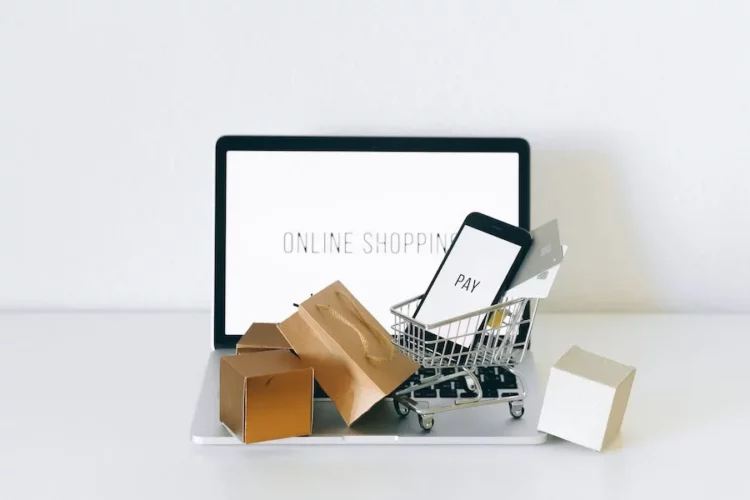The trend of B2B eCommerce is on the rise, it’s here to stay, and you can use our top 5 B2B eCommerce best practices to boost your marketplace.
Ecommerce is no longer just about selling online; it’s now about creating online marketplaces. It has become a popular way for B2B businesses to reach their customers directly and sell their products online.
With this paradigm change, businesses can launch their own branded marketplaces instead of just selling their products on a third-party platform.
With the right best practices, you can turn your business into an effective B2B eCommerce marketplace and gain an edge over your competitors.
Here are some tips on optimizing your B2B eCommerce strategy and ensuring your business thrives in this new world of commerce.
1. Are You Accessible On Mobile Phones?
Suppose you want to attract more B2B customers and boost your sales. In that case, you must ensure that your eCommerce platform is accessible on mobile phones, especially if you’re targeting B2B customers in emerging markets.
B2B eCommerce buyers increasingly rely on their mobile phones to make purchases. According to a survey, 58% of B2B customers purchase products on their mobile phones. That’s why you must ensure that your B2B eCommerce platform is accessible on smartphones.
Lucky for you, if you don’t have the experience, you can hire professional mobile app development services from experts to design for you an easy-to-use and professional eCommerce mobile app.
You want to make sure that you give your customer the best experience while using your interface to search through your product catalog.
2. Customer Reviews & Ratings Can Go A Long Way
Another important aspect of B2B eCommerce is to build trust among your customers by including customer reviews and product ratings.
Your B2B customers will be more likely to buy from you if they see that other people are also satisfied with your products.
You should give buyers a platform to leave detailed product reviews to help other buyers make more informed purchase decisions. This is a great way to boost your brand reputation and make more sales.
For example, if you’re a manufacturer of wind turbines and you sell your products on a B2B eCommerce platform, then you should ask your previous customers to leave their reviews and ratings so that other users can see them.
3. Social Media Marketing
Social media marketing is one of the most effective ways to increase brand awareness and generate new leads.
To sustain and grow your sales over the long term, you must also focus on raising your brand awareness.
Promoting your marketplace on social media can reach a broader audience and bring potential customers to your online storefront.
However, you must first identify the right channels to create an effective social media marketing strategy.
The most popular social media channels for B2B marketing are Facebook, Twitter, LinkedIn, and Instagram.
If your marketplace primarily sells to businesses, then Facebook and LinkedIn are the best channels.
On the other hand, if you are targeting both businesses and individuals, then Instagram and Twitter are your best options.
4. User-Friendly Interface
Last but not least, you should focus on creating a user-friendly interface so that your B2B customers can easily make purchases on your eCommerce platform.
B2B eCommerce customers are often busy professionals who are easily distracted. They might be looking for an easy and convenient way to make their purchases.
To make your platform easy to use, you should keep your interface as simple as possible. You should also give your customers all the information and assistance they need to make their purchases.
For example, if you are selling car parts, you should categorize them according to the make of the vehicle & year of production, price, and function of the part.
5. Use SEO
A significant portion of B2B eCommerce sales come from organic search, so B2B sellers need to optimize their products for SEO.
To target B2B customers and drive more sales through your online marketplace, you should focus on SEO and keyword research from the start.
Many B2B product categories are often searched through keywords. For example, suppose you’re a manufacturer of equipment for oil refineries. In that case, you should be focusing on keywords such as “manufacturers of equipment for oil refineries,” “oil refinery equipment manufacturers,” “oil refinery equipment suppliers,” “oil refinery equipment,” and so on.
In addition, you can also try out PPC advertising to further push your product out there. Pay-per-click advertising can target potential customers actively looking for your products. These people might not even know that your B2B eCommerce marketplace exists.
What Is B2B?
B2B refers to business-to-business sales. These are typically sales made by companies to other companies to make a profit.
B2B buyers are often large corporations that make buying decisions based on cost, quality, and delivery time. They are looking for high-quality products at low prices. B2B sellers often offer their products at a discount to gain market share.
What Is B2C?
Business-to-consumer (B2C) marketing refers to a company targeting its marketing efforts at individual consumers. Business-to-consumer marketing is also known as consumer marketing or one-to-one marketing.
It’s the kind of marketing you often see with services like video streaming sites, online shopping websites, and other digital marketplaces where you can buy things directly from companies instead of going through third parties like wholesalers and distributors.
Conclusion
If you follow our top 5 B2B eCommerce best practices to boost your marketplace, you’ll see some improvements in your sales.
Ecommerce has become a popular way for B2B businesses to reach their customers directly and sell their products online.
To make your B2B eCommerce platform successful, you should focus on SEO, including product reviews and ratings, paid search marketing, and brand awareness, and be accessible on mobile phones.







